As we move into the second half of 2025, building or upgrading a desktop PC has never been more exciting or confusing. With both Intel and AMD offering compelling options for budget-conscious gamers, streamers, and productivity users, the mid-range segment is packed with value and performance.
In this detailed comparison, we’ll look at some of the most popular and accessible mid-range CPUs available today: the AMD Ryzen 5 5600X, 5600GT, and 8500G, and Intel’s Core i5-9600K, 11400F, 12400, 13400F, and 14400. These chips cater to users with different needs—from those looking for affordable integrated graphics, to others wanting future-proof builds with DDR5 and PCIe Gen 5 support.
We’ll explore the specs, performance, use cases, pros and cons, architecture details, and even give you an updated comparison table and India-specific pricing to help you make the right decision.
Also check out post about Top 6 Best Air Conditioners below Rs 30000
This post contains affiliate links. If you make a purchase through these links, we may earn a commission at no extra cost to you.“
Table of Contents
Understanding the Lineup: AMD vs Intel
AMD Ryzen 5 Series – Power Meets Affordability
AMD’s Ryzen 5 lineup, especially the 5600X and 5600GT, built on the Zen 3 architecture, are some of the most efficient CPUs for 1080p gaming and multitasking workloads. In contrast, the 8500G uses AMD’s latest Zen 4 architecture, bringing better efficiency, higher IPC (instructions per clock), and support for DDR5 memory and AM5 socket motherboards.
AMD is especially appealing if:
- You want great multi-threaded performance.
- You’re upgrading an older AM4-based build.
- You want integrated graphics (GT or G models).
- You prefer value-packed CPUs with included stock coolers.
Intel Core i5 Series – A Hybrid Evolution
Intel’s Core i5 lineup has seen impressive evolution since the 9th Gen. With Alder Lake (12th Gen) and Raptor Lake (13th and 14th Gen), Intel introduced hybrid architecture, combining performance cores (P-cores) and efficiency cores (E-cores). This design significantly boosts multitasking and background task handling.
Intel processors shine when:
- You want strong single-core and gaming performance.
- You plan to use DDR5 and PCIe 5.0 in the near future.
- You value integrated graphics (non-F models).
- You’re building on a modern 600 or 700-series motherboard.
In-Depth Comparison Table
| Feature | Ryzen 5 5600X | Ryzen 5 5600GT | Ryzen 5 8500G | i5-9600K | i5-11400F | i5-12400 | i5-13400F | i5-14400 |
|---|---|---|---|---|---|---|---|---|
| Architecture | Zen 3 | Zen 3 | Zen 4 | Coffee Lake | Rocket Lake | Alder Lake | Raptor Lake | Raptor Lake |
| Cores / Threads | 6 / 12 | 6 / 12 | 6 / 12 | 6 / 6 | 6 / 12 | 6 / 12 | 10 (6P+4E) / 16 | 10 (6P+4E) / 16 |
| Base / Boost Clock (GHz) | 3.7 / 4.6 | 3.6 / 4.6 | 3.5 / 5.0 | 3.7 / 4.6 | 2.6 / 4.4 | 2.5 / 4.4 | 2.5 / 4.6 | 2.5 / 4.7 |
| Cache (L2 + L3) | 35 MB | 19 MB | 22 MB | 9 MB | 12 MB | 18 MB | 20 MB | 20 MB |
| TDP (W) | 65 | 65 | 65 | 95 | 65 | 65 | 65 | 65 |
| Socket | AM4 | AM4 | AM5 | LGA1151 | LGA1200 | LGA1700 | LGA1700 | LGA1700 |
| iGPU | ❌ | ✅ Radeon | ✅ Radeon | ✅ UHD 630 | ❌ | ✅ UHD 730 | ❌ | ✅ UHD 730 |
| PCIe Support | Gen 4 | Gen 4 | Gen 4 | Gen 3 | Gen 4 | Gen 4 | Gen 5 + 4 | Gen 5 + 4 |
| Memory Support | DDR4 3200 | DDR4 3200 | DDR5 5200+ | DDR4 2666 | DDR4 3200 | DDR4/DDR5 | DDR4/DDR5 | DDR4/DDR5 |
| Cooler Included | Yes (Stealth) | Yes (Stealth) | Yes | ❌ | Yes | Yes | Yes (RM1) | Yes (RM1) |
| Overclocking Support | ❌ | ❌ | ❌ | ✅ | ❌ | ❌ | ❌ | ❌ |
Gaming Performance: Frame Rates vs Value
In real-world gaming, differences among these processors can be subtle if you’re pairing them with a decent GPU. However, some highlights include:
- Ryzen 5 5600X shines in CPU-bound games like CS:GO, Valorant, and Dota 2 due to high single-thread performance.
- i5-13400F and i5-14400 dominate in modern AAA titles with better multi-threaded scaling, especially in games like Cyberpunk 2077, Hogwarts Legacy, or Starfield.
- Ryzen 5 5600GT and 8500G offer playable 720p–1080p performance in esports titles without a discrete GPU (Rocket League, League of Legends, Fortnite).
- i5-12400 with UHD 730 performs decently for media, office work, and light indie gaming.
If you’re not using a GPU, integrated graphics become a huge deciding factor. AMD’s Radeon Vega graphics are stronger than Intel’s UHD 730/630, but the UHD 730 can handle 4K media playback, multi-monitor setups, and 1080p video editing tasks.
Motherboard & Platform Compatibility
Compatibility is key when selecting a CPU. Here’s what you should know:
AMD
- Ryzen 5 5600X / 5600GT: Compatible with AM4 boards (B450, B550, X570). Great for upgraders.
- Ryzen 5 8500G: Needs newer AM5 boards (B650, X670) and DDR5 memory, so platform cost is higher.
Intel
- i5-11400F: Requires LGA1200 motherboard (B560, H510).
- i5-12400 / 13400F / 14400: Use LGA1700 socket with 600/700 series boards. Some boards offer both DDR4 and DDR5 support—ideal for incremental upgrades.
Tip: Intel’s F-series CPUs (like 11400F, 13400F) lack integrated graphics, so a GPU is mandatory.
AMD Ryzen 5 5600X Processor – Still a Top-Tier Choice for Budget Enthusiasts
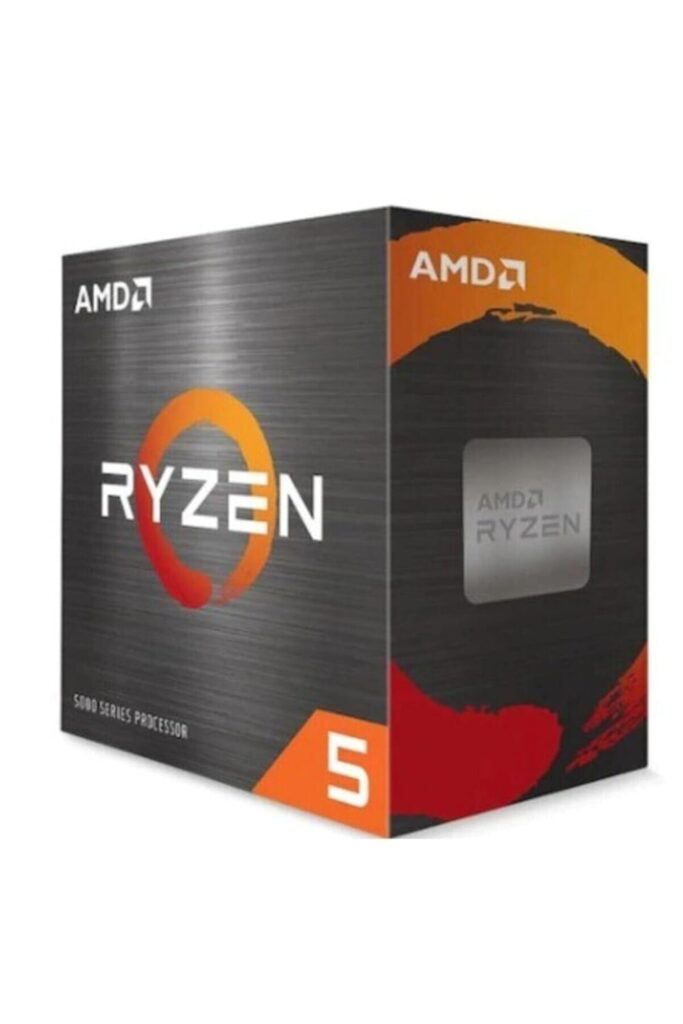
The Ryzen 5 5600X continues to be a fan-favorite in 2025 thanks to its excellent balance between price and performance. Although it’s built on the aging AM4 platform, its efficiency and gaming prowess make it a go-to CPU for users upgrading from older Ryzen 1000/2000 series chips. Its compatibility with older B450 and newer B550 motherboards gives buyers flexibility and affordability, especially for gamers looking to invest more in a GPU. Even in newer titles like Resident Evil 4 Remake or Elden Ring, the 5600X holds its ground when paired with a mid-tier GPU like the RTX 3060 or RX 6700 XT.
AMD Ryzen 5 5600GT Processor – Integrated Graphics with No Compromise
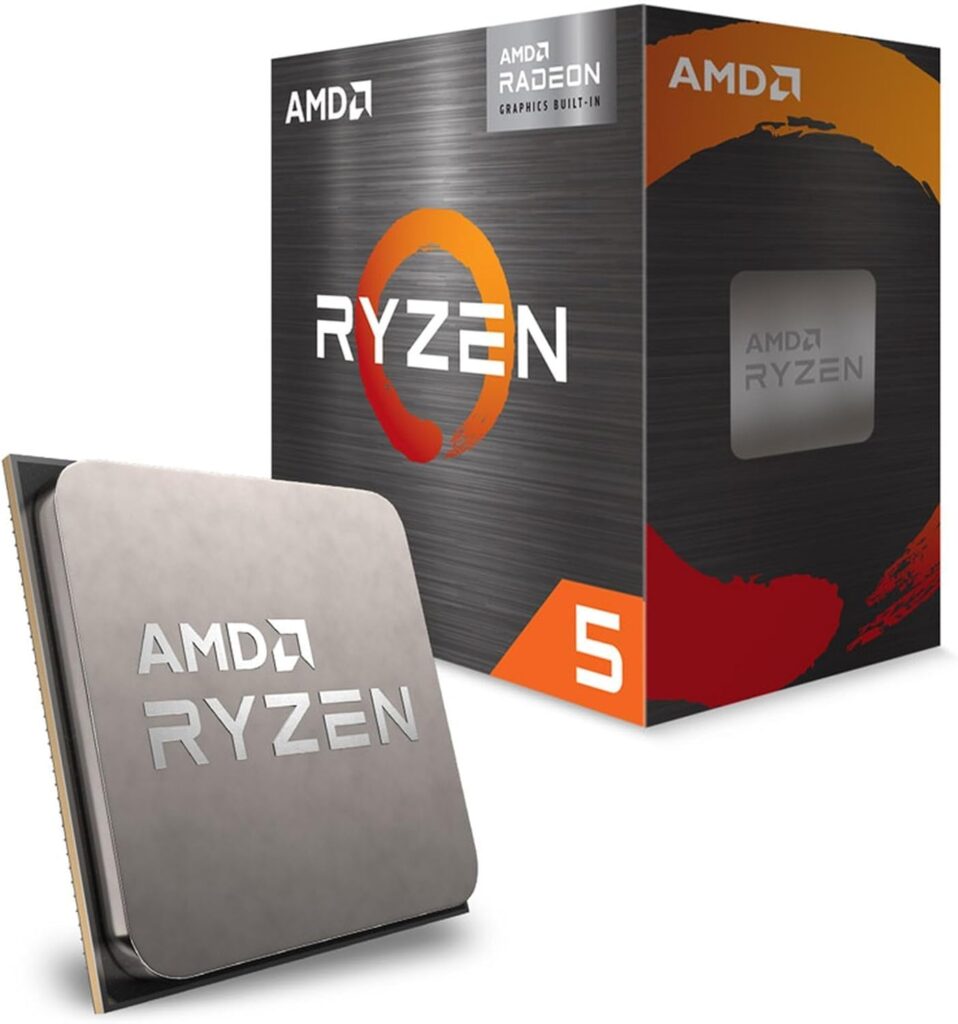
The Ryzen 5 5600GT offers the same core/thread configuration as the 5600X but includes Radeon integrated graphics, eliminating the need for a discrete GPU for basic users. It’s an ideal processor for office PCs, entry-level gaming rigs, and multimedia workstations that prioritize simplicity and efficiency. The 5600GT also boasts lower cache than the 5600X but still delivers enough power for tasks like photo editing, running virtual machines, and even some light 1080p gaming. It’s arguably the best drop-in upgrade option on the AM4 platform for those who want graphical capability without spending extra.
AMD Ryzen 5 8500G Processor – The Zen 4 APU for the Next Generation
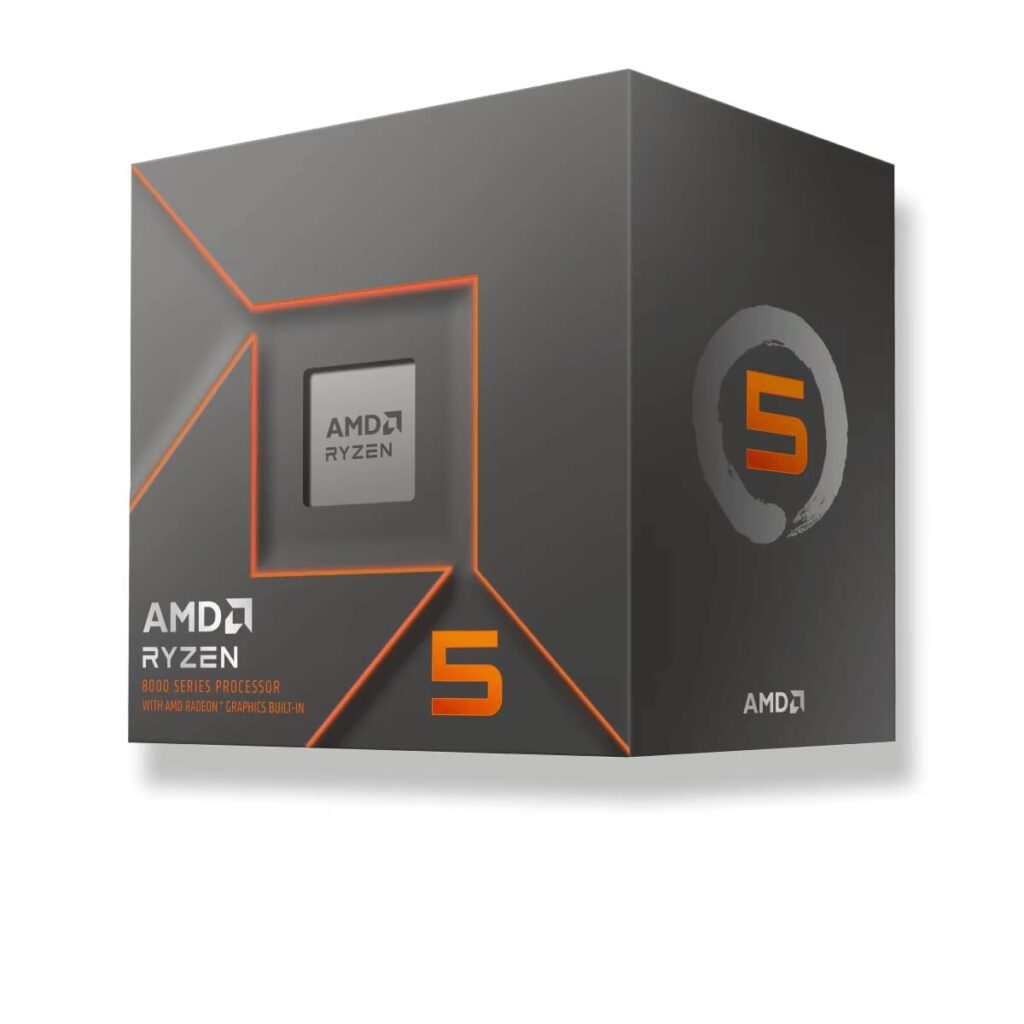
If you’re planning a new PC in 2025 and want to avoid the early expense of a GPU, the Ryzen 5 8500G is one of the best APUs you can get. Built on the AM5 socket and Zen 4 architecture, this chip supports blazing-fast DDR5 memory and brings RDNA 3-based Radeon Graphics, making it a capable performer for AAA titles at low-medium settings. It also allows new builders to access the latest PCIe Gen 5 storage and GPU standards, ensuring their system will stay relevant for years. For creators and gamers on a budget who still want modern features, the 8500G is a strong contender.
Intel Core i5-9600K Processor – A Legacy Chip That Still Works
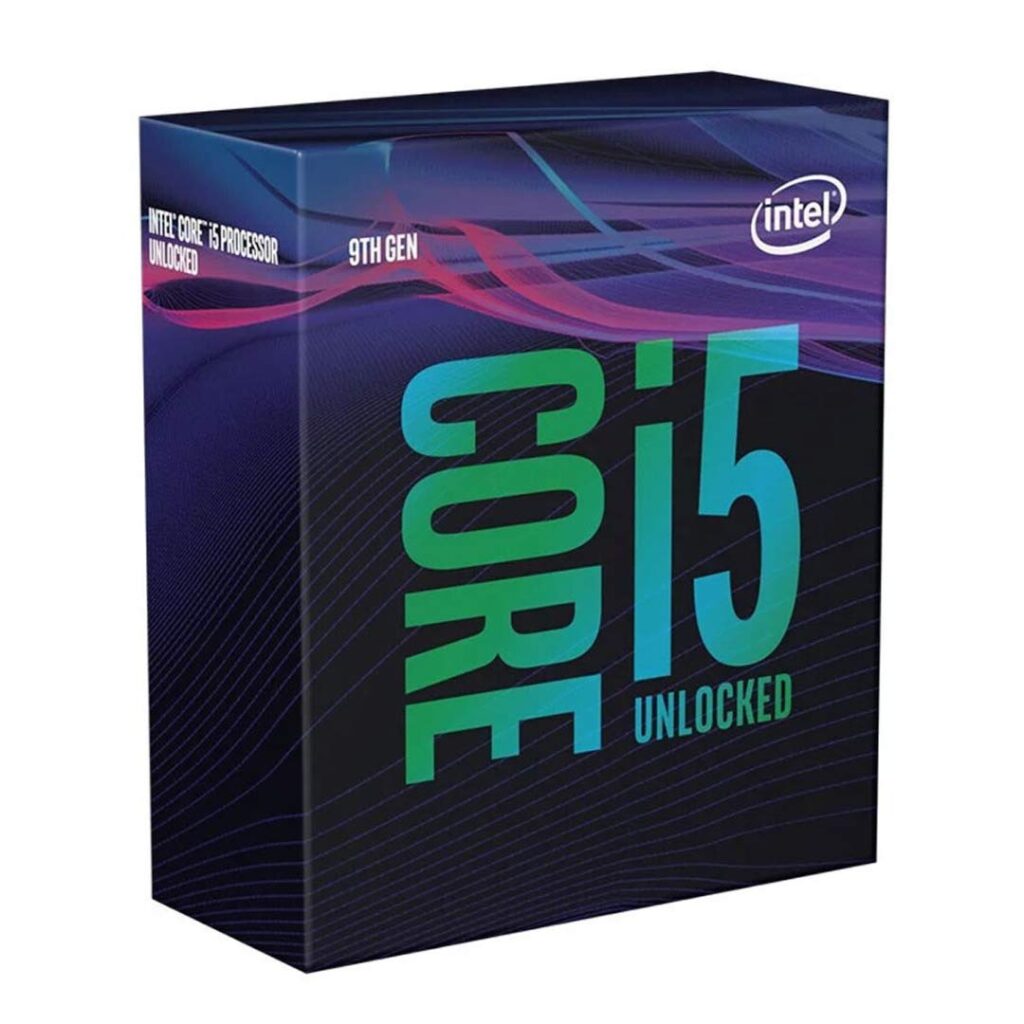
Although the Intel Core i5-9600K has been superseded by more efficient, multithreaded models, it remains a viable option for legacy system builders or those purchasing used parts. Its unlocked multiplier makes it overclock-friendly for enthusiasts who want to extract extra performance. That said, with only six threads and no hyper-threading, it’s not ideal for heavy multitasking. However, paired with a solid cooler and a Z390 motherboard, the 9600K still delivers excellent frame rates in esports and older AAA titles, and could make a great processor for a secondary or budget-conscious gaming PC.
Intel Core i5-11400F Processor – Budget King with Surprising Power
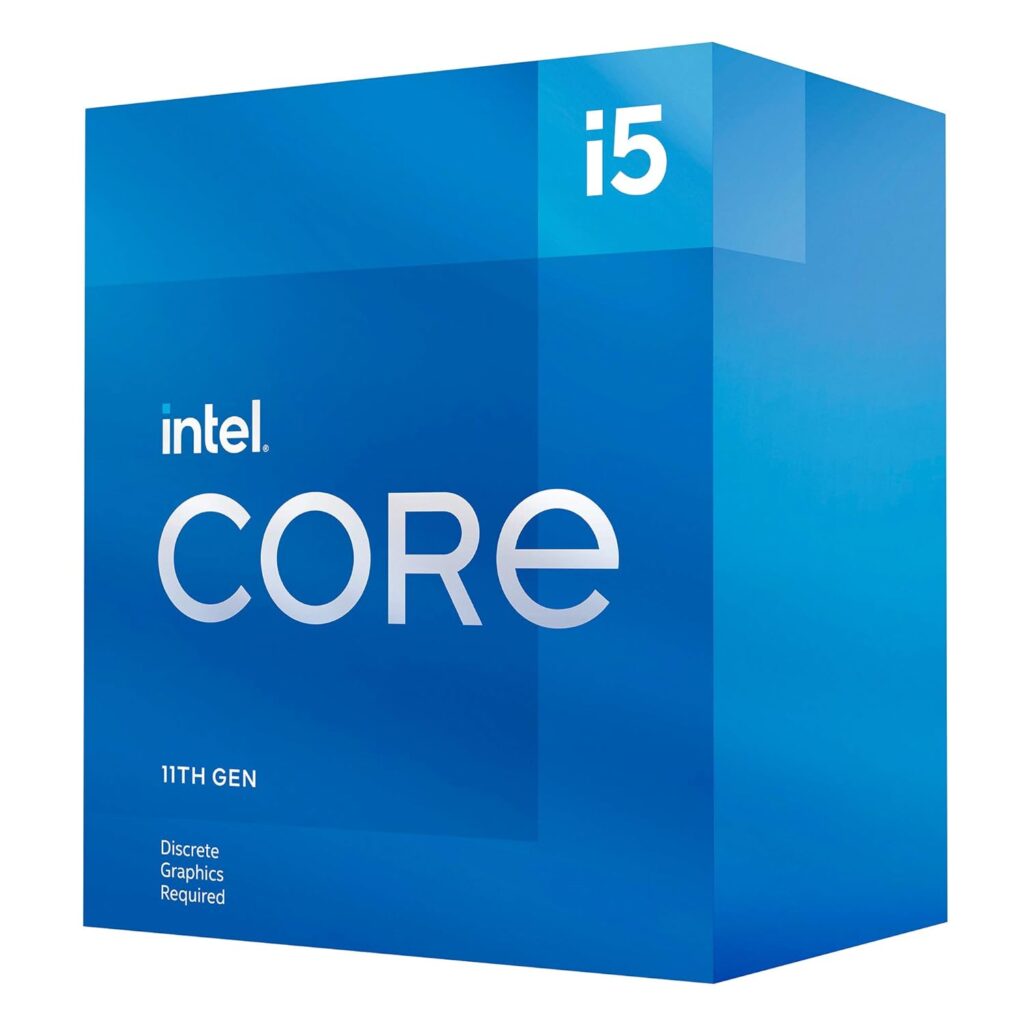
The i5-11400F is a hidden gem in Intel’s lineup. Even though it lacks integrated graphics, its Rocket Lake architecture and 6-core/12-thread setup allow it to punch above its weight in gaming and productivity. It’s often praised for its consistent frame times in CPU-intensive games and runs cool even under sustained load. Since it works with affordable B560 motherboards and supports PCIe 4.0, it’s a great choice for first-time builders or upgraders who want strong value and don’t mind adding a discrete GPU like an RX 6600 or GTX 1660 Super.
Intel Core i5-12400 Processor – A Balanced Performer for All-Round Builds
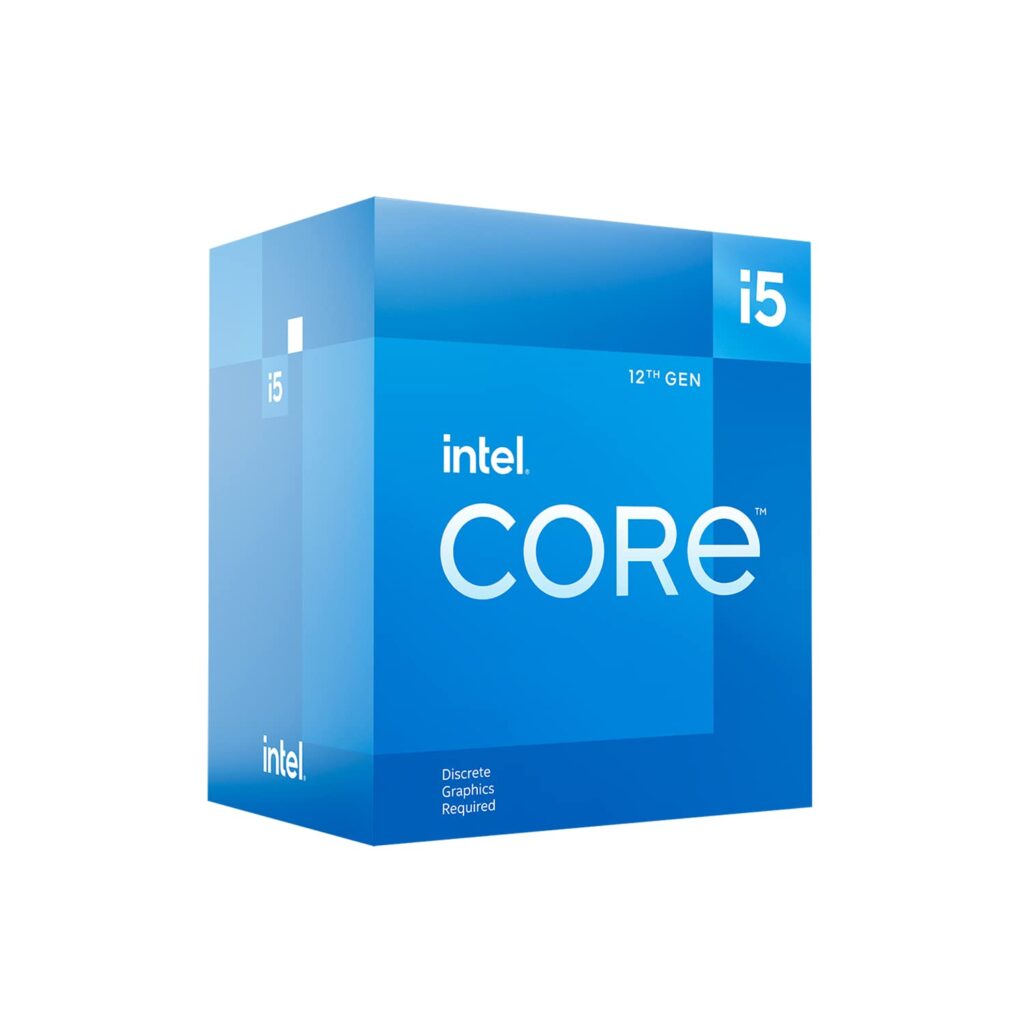
With support for DDR5, PCIe Gen 5, and decent integrated UHD 730 graphics, the Intel Core i5-12400 is often seen as the sweet spot in Intel’s 12th Gen lineup. It delivers excellent single-core and multi-core performance without the added complexity or cost of a hybrid architecture. That makes it easier to cool, more predictable in workloads, and very beginner-friendly. Whether you’re gaming, streaming, or working on creative projects like Premiere Pro or Blender, the 12400 handles it all smoothly. It’s also highly efficient, making it perfect for compact or low-noise PC builds.
Intel Core i5-13400F Processor – The New Standard for Gaming and Productivity
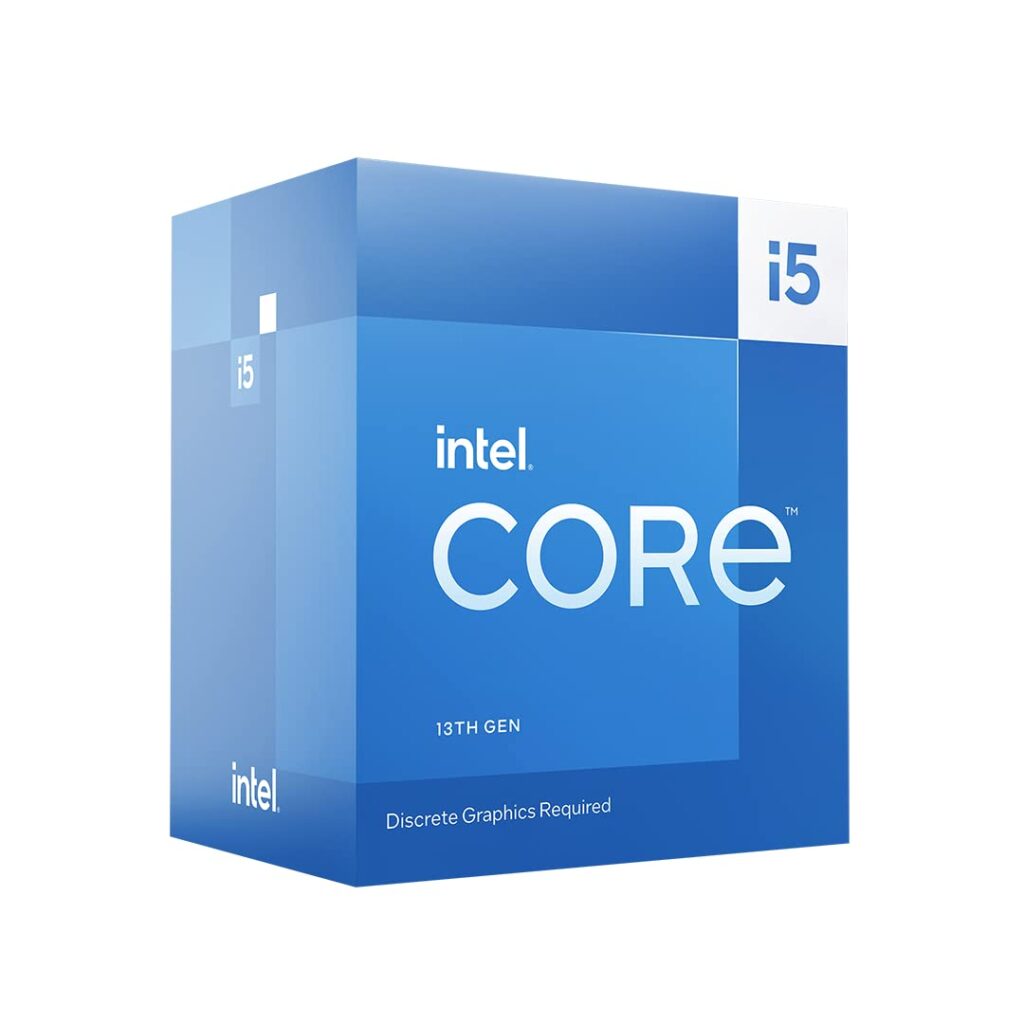
One of the best CPUs in its class, the i5-13400F brings 10 cores (6P + 4E) and 16 threads to the table, which translates into incredible multitasking and background processing power. It handles everything from AAA gaming to content creation without breaking a sweat. The lack of an iGPU is its only limitation, but when paired with a dedicated GPU like the RTX 4060 or RX 7600, the 13400F becomes a formidable combo. Thanks to its efficiency cores, background processes like Windows updates or browser tabs won’t interrupt gaming or streaming sessions—a major win for users who multitask heavily.
Intel Core i5-14400 Processor – Hybrid Power with Modern Connectivity
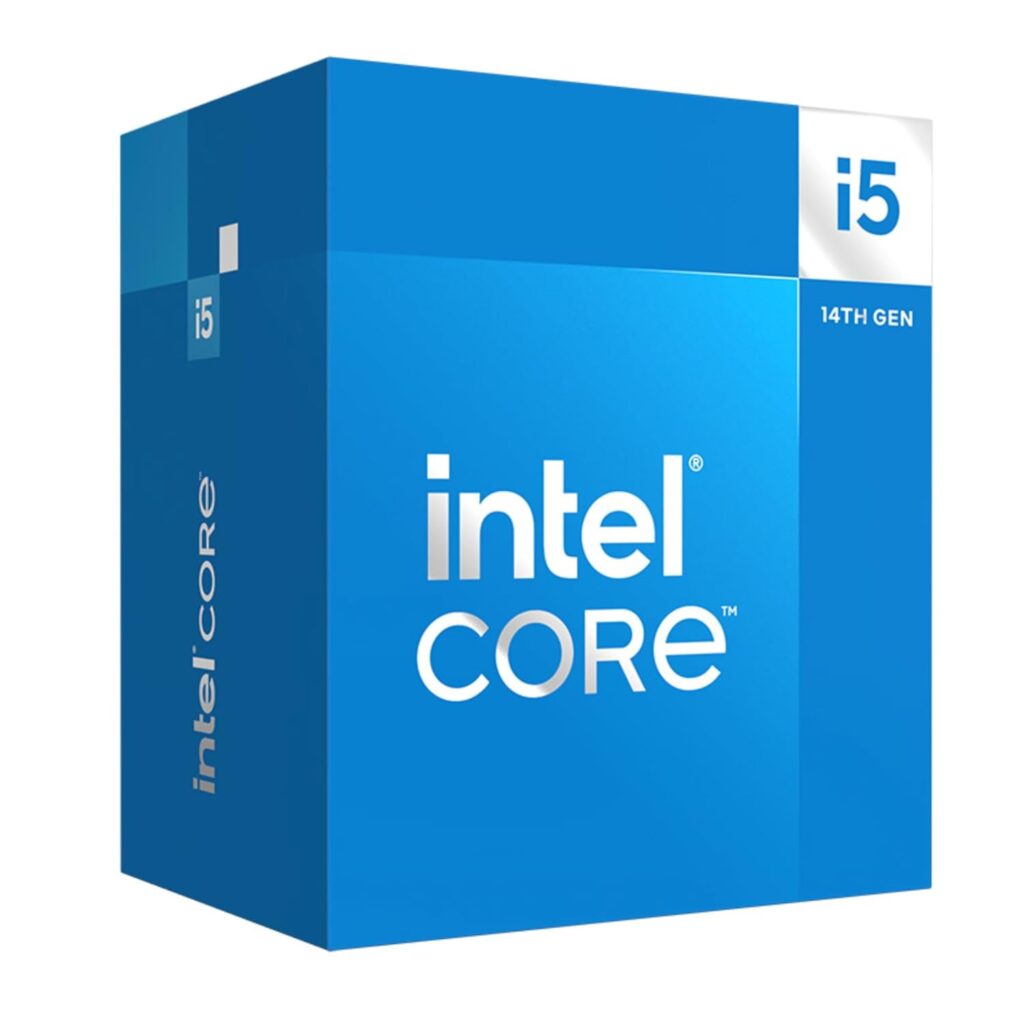
The i5-14400 improves upon the 13400F by offering slightly better boost speeds and integrated graphics, which makes it a more flexible choice for users who may delay buying a GPU. It shines in modern workloads, including AI-assisted editing, video rendering, multitasking, and next-gen gaming. Support for PCIe Gen 5, DDR5 RAM, and Intel’s Laminar RM1 cooler gives it an edge in building quieter, faster, and more future-ready systems. It’s perfect for buyers who want to stay ahead of the curve without jumping into the high-end i7 or i9 segment.
Productivity and Multitasking
In multitasking and productivity workloads like video rendering, software compilation, virtualization, or Adobe suite tasks, core/thread count and architecture matter.
- i5-13400F and i5-14400, with their 10-core (6P+4E) design, offer better task distribution and lower power draw.
- Ryzen 5 5600X and 5600GT remain competitive with strong SMT (Simultaneous Multithreading) but fall behind in heavily multi-threaded tasks.
- Ryzen 5 8500G brings excellent content creation ability while reducing the need for a discrete GPU.
For power users who do a bit of everything—gaming, video editing, Chrome multitabs, VM running—the Intel 13400F or AMD 8500G strike the best balance.
Cooling and Thermal Efficiency: What to Expect
Another critical factor often overlooked when choosing a processor is thermal performance and cooling requirements. Fortunately, most modern mid-range processors in this list come with stock coolers that are decent for out-of-the-box use.
- AMD’s Wraith Stealth cooler, included with the Ryzen 5 5600X, 5600GT, and 8500G, provides solid thermal management in typical workloads. It’s whisper-quiet during idle and mid-loads, but might run hotter in prolonged gaming or rendering sessions.
- Intel’s Laminar RM1 cooler, bundled with the i5-12400, i5-13400F, and i5-14400, has seen improvements over previous stock designs. It’s quiet, reliable, and perfect for budget builds without additional cooler investment.
- The i5-9600K and 11400F deserve caution—only the 11400F includes a cooler, while the 9600K requires a third-party solution.
If you plan on overclocking (applicable only to unlocked CPUs like the i5-9600K), investing in a mid-range tower air cooler or a 240mm AIO liquid cooler is strongly advised. For most users sticking to stock settings, the included coolers are sufficient.
Power Efficiency & System Load
Power consumption is increasingly important—not just for your electricity bill, but also for system stability, cooler requirements, and thermal output.
All the processors in this comparison operate at a TDP of around 65W, except the i5-9600K, which draws up to 95W under full load. That makes it less efficient than newer CPUs built on refined 7nm (AMD) and Intel 7 processes.
Thanks to AMD’s Zen 3 and Zen 4 architectures, chips like the 5600X and 8500G deliver excellent power efficiency, even during intensive tasks. Similarly, Intel’s 12th, 13th, and 14th Gen processors benefit from the hybrid core layout, where E-cores handle background tasks at minimal power.
If you’re building a compact or silent PC, CPUs like the Ryzen 5 5600GT, i5-12400, or 8500G are perfect picks due to their balance of performance-per-watt and lower thermal design.
Upgradability and Platform Longevity
Upgradability is a long-term consideration, especially if you plan to expand your system later with faster memory, GPUs, or SSDs.
AMD:
- AM4 platform (5600X and 5600GT) is nearing its end of life. While it’s still compatible with a huge ecosystem of affordable motherboards, it may not receive further CPU support.
- AM5 platform (8500G) is AMD’s new future-forward socket that supports DDR5 and PCIe Gen 5, making it the better investment if you’re building a new PC in 2025.
Intel:
- LGA1700 socket used by i5-12400, 13400F, and 14400 supports both 600 and 700-series chipsets. However, Intel has already teased plans to transition to LGA1851 in the coming generations.
- If you’re buying a B760 or Z790 motherboard, ensure it has BIOS update support and DDR5 if future expansion is important to you.
In summary: Go AM5 or LGA1700 (DDR5-ready) if you care about longevity and future CPU upgrades. AM4 and LGA1200 are better for budget-focused builds where you want the best bang-for-buck right now.
Real-World Example Builds
To help you better understand where each processor fits in, here are a few example builds tailored to different user needs:
Budget Student/Office Build (No GPU)
- CPU: AMD Ryzen 5 5600GT
- Motherboard: B550M
- RAM: 16GB DDR4 3200 MHz
- Storage: 500GB NVMe SSD
- Use Case: Zoom, Office, light editing, YouTube
- Reason: Affordable, efficient, and integrated graphics ready.
Mid-Range Gaming Build
- CPU: Intel Core i5-13400F
- Motherboard: B760 DDR4
- GPU: RTX 4060
- RAM: 16GB DDR4 3600 MHz
- Storage: 1TB SSD
- Use Case: 1080p/1440p gaming, streaming, video editing
- Reason: Hybrid architecture helps in multitasking and gaming.
Content Creation & Light Gaming
- CPU: AMD Ryzen 5 8500G
- Motherboard: B650
- RAM: 32GB DDR5 5600 MHz
- Storage: 1TB Gen 4 SSD
- Use Case: Adobe Premiere, Photoshop, 1080p editing, gaming
- Reason: Excellent iGPU + future-ready with DDR5 and PCIe 5.
Benchmark Notes & Test Summaries
In benchmark testing from multiple sources like PassMark, Cinebench R23, and real-world gaming FPS logs, we see consistent results:
- Cinebench R23 Multicore: i5-13400F and 14400 often lead, thanks to more threads.
- Cinebench Single Core: Ryzen 5 5600X and i5-12400 are neck and neck.
- Gaming at 1080p (with RTX 4060): All CPUs deliver over 100+ FPS in optimized games like Valorant, GTA V, and Call of Duty: Warzone.
- iGPU Gaming (no GPU): Ryzen 8500G leads, followed by 5600GT. Intel UHD 730 is usable, but not for demanding games.
Why Some CPUs Are Still Relevant in 2025
You may wonder why older processors like the i5-9600K or Ryzen 5 5600X are still in the conversation. Simple—they deliver great value for budget builds, especially if you’re buying second-hand parts or upgrading existing systems.
- i5-9600K might lack hyperthreading, but it’s still capable of 100+ FPS gaming with a good GPU.
- Ryzen 5 5600X, despite launching years ago, is still sold new and supported on many AM4 motherboards, making it ideal for quick upgrades.
Price and Value in India (2025 Estimates)
| Processor | Price (INR ₹) | Best For |
|---|---|---|
| Ryzen 5 5600X | ₹13,000–₹14,500 | High FPS gaming with GPU |
| Ryzen 5 5600GT | ₹11,000–₹12,500 | Budget builds without GPU |
| Ryzen 5 8500G | ₹15,000–₹17,000 | Future-proof builds + integrated graphics |
| i5-9600K | Discontinued | Only for legacy systems |
| i5-11400F | ₹10,500–₹12,000 | Budget gaming with GPU |
| i5-12400 | ₹13,000–₹15,000 | Versatile all-rounder |
| i5-13400F | ₹15,000–₹16,500 | Multitasking and hybrid workloads |
| i5-14400 | ₹17,000–₹18,500 | Modern DDR5 gaming, no GPU needed |
Final Verdict: Best Mid-Range CPU in 2025?
| Category | Winner |
|---|---|
| Best for Gaming (with GPU) | Ryzen 5 5600X / i5-12400 |
| Best with Integrated GPU | Ryzen 5 8500G / i5-14400 |
| Best Budget Choice | Ryzen 5 5600GT / i5-11400F |
| Best for Upgraders | Ryzen 5 5600X / i5-12400 |
| Best for Creators/Multitask | i5-13400F / Ryzen 5 8500G |
| Most Future-Proof | Ryzen 5 8500G / i5-14400 |
Conclusion: Intel or AMD?
If you’re on AM4 or want value and great multithreaded performance, AMD Ryzen 5 5600X is hard to beat. Need onboard graphics? Grab the 5600GT or 8500G. Prefer DDR5, PCIe 5.0, and hybrid core magic? Intel’s 12400, 13400F, and 14400 are your best bets.
Ultimately, your choice depends on your build goals, GPU availability, and budget. For many, the sweet spot is the Ryzen 5 5600GT or Intel Core i5-12400—both reliable, efficient, and wallet-friendly.